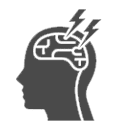Glendale Traumatic Brain Injury Lawyers
- 550+ Google 5-Star Reviews
- $1 Billion won over 15 years
- Won’t settle for low offers, not afraid to fight for max value

Get a Free Case Evaluation
No fees until we win!
All San Diego Case Types

Personal Injury

Brain Injury

Car Accident

Slip & Fall

Truck Accident

Wrongful Death
Glendale Traumatic Brain Injury Lawyers
With a thriving nightlife in the Downtown Art & Entertainment District, highly rated public schools, and a focus on healthy living, Glendale is often mentioned as one of the best places to live in California, particularly given its proximity to Los Angeles. However, even great places pose a danger of injury to those who live, work, and visit there. One of the most serious injuries a person can suffer is a brain injury, due to the permanent damage this type of injury can cause, as well as the many impacts a brain injury has on an individual’s ability to live the life that he or she had planned.
If you or your loved one has suffered a brain injury in California that was a result of someone else’s careless or reckless actions, you can recover damages related to your injury by calling our Glendale traumatic brain injury lawyers. Read on for more information about brain injuries and the legal process that surrounds them.
What Is a Brain Injury?
An acquired brain injury is one that is not hereditary, congenital, birth-related, or progressive. Rather, it is damage caused by an internal or external force.
There are two types of acquired brain injuries:
- Traumatic brain injuries: A traumatic brain injury is an acquired injury that results from a violent blow to the head or body. Some of the most common causes of traumatic brain injuries include motor vehicle accidents, falls, assaults (including domestic violence and child abuse), sports and recreational activities (such as contact sports), surfing, diving, and injuries resulting from military combat, including explosive blasts. Traumatic brain injuries can be closed—meaning the injury occurs within the skull, or open—which involves an object penetrating the skull.
- Non-traumatic acquired brain injuries: This type of brain injury results from internal factors, such as exposure to toxic substances, like carbon monoxide or lead paint, deprivation of oxygen because of near-drowning or suffocation, or medical conditions, such as strokes or tumors.
While brain injuries are categorized as mild, moderate, or severe, it cannot be stressed enough that there is nothing mild about brain injury. Even concussions—regarded as “mild” traumatic brain injuries—can produce devastating, permanent impacts, including memory loss and chronic headaches.
The brain is a complex organ that controls all of the body’s functions and involuntary responses. Each brain injury and the impacts it has on the sufferer’s life is unique. The brain is divided into several segments, known as lobes, and each lobe controls different functions of the body. When that lobe sustains damage, it can impact the functions that it controls.
The various lobes, the functions they control, and possible impacts of injury include:
- Frontal lobe: The frontal lobe, located in the front part of the brain, is responsible for important functions, such as memory, organization, attention, awareness of abilities and limitations, impulse and behavior control, the ability to speak, personality, and emotions. Damage to this part of the brain can result in difficulty controlling one’s impulses, behavior, and emotions, difficulty recalling events, and the ability to speak.
- Temporal lobe: The temporal lobe is responsible for functions like memory, the ability to understand spoken language, sequencing, hearing, and organization. Temporal lobe injuries cause difficulty in the injured person’s ability to remember and communicate.
- Occipital lobe: The occipital lobe’s primary function is vision-related. An injury to this part of the brain could result in blindness or the inability to see and perceive the size and shape of objects.
- Parietal lobe: The parietal lobe is responsible for functions relating to the primary senses of touch, taste, smell, hearing, and sight. An injury to this part of the brain can result in deficits involving these primary senses.
- Cerebellum: The cerebellum controls the body’s balance and coordination, skilled motor activity, and visual perception. An injury to the cerebellum can result in difficulty with balanced movement and coordination.
- Brainstem: The brainstem controls the body’s involuntary responses, such as breathing, heart rate, consciousness, and the body’s sleep/wake cycles. Injuries to this area of the brain are often fatal, as the body can’t perform these necessary responses without the use of mechanical assistance.
The people most likely to suffer a brain injury include males of any age group, young children who are susceptible to dangers like falling or swimming pool accidents, young adults ages 15 to 24 due to an increased risk of injury as a result of automobile accidents or sports and recreation accidents, and adults over 60 who are at an increased risk of falling.
Complications of Glendale Traumatic Brain Injuries
Much of the early treatment of brain injuries involves the prevention of common complications that can result in further damage to the brain and even result in fatal consequences.
Some of the common complications of brain injuries include:
- Altered consciousness: Brain injuries can impact a person’s ability to be awake and aware and can even result in consciousness disorders, such as coma, which is a state of unconsciousness that lasts for at least 24 hours, vegetative state, which is a state in which a person may have the ability to open his or her eyes and perform involuntary functions but is completely unaware of his or her surroundings, or minimally conscious state, which is a condition in which the consciousness is severely impacted but the individual has periods of limited awareness of self and surroundings.
- Seizures: It is not uncommon for an individual who has suffered a brain injury to have seizures soon after the injury’s onset, and often initial treatment will include anti-seizure medication. For some individuals, seizures can occur weeks, months, or even years after the injury. Recurrent seizures are known as post-traumatic epilepsy.
- Hydrocephalus: This condition involves a buildup of cerebrospinal fluid on the brain and generally occurs shortly after the onset of the injury. Hydrocephalus may cause an increase of pressure in the brain, which can result in further damage to the brain if left untreated. Treatment for hydrocephalus often involves the surgical placement of a shunt to drain the excess fluid from the brain into other parts of the body.
- Infections: Infection is a particularly common complication with penetrating injuries where the object that has gone through the skull introduces bacteria into the protective covering of the brain. Infections are also a risk with individuals who are suffering consciousness disorders due to the injury and can’t communicate sources of pain that would indicate an infection in another part of the body, such as the urinary tract.
- Fevers: Fever is often the first sign that a brain-injured individual is suffering from an infection. However, fevers can also occur due to damage to the part of the brain that regulates body temperature.
- Blood vessel damage: In addition to the brain itself, damage can occur to the blood vessels of the brain, resulting in serious and even life-threatening complications, such as stroke or blood clots.
- Blood clots: Blood clots can not only appear in the brain after injury, but also in the deep veins of the legs due to immobility. Blood clots in the legs are known as deep vein thrombosis and can result in an often-deadly condition known as pulmonary embolism, which occurs when the blood clot becomes dislodged from the leg and travels through the bloodstream to the lungs.
- Heterotopic ossification: This condition involves a buildup of bone material in areas of the body where bone is not normally found, such as the joints of the hips or shoulders. This condition often results in pain, inflammation, and loss of the range of motion to the affected limb. Surgery is often needed to remove the growth.
Costs of Glendale Traumatic Brain Injuries
Because the brain has only a limited ability to heal itself from damage sustained by an injury, permanent disabilities often result. This, combined with the high likelihood of complications lasting longer than the initial period immediately following the injury, makes this type of injury extraordinarily expensive to treat.
The lifetime costs of medical expenses alone following a brain injury are estimated to be between $85,000 and $3 million. This cost, added to other stressors created by the injury, including the inability to work, results in a financial crisis for many families after a loved one has suffered an injury. More than half of the nation’s homeless population is living with a brain injury. While some of these injuries are the result of the difficult and dangerous living conditions presented by homelessness, for many others, the injury was the catalyst to becoming homeless.
A Whole Life’s Worth of Impacts
Brain injuries don’t just impact an individual’s finances.
This type of injury impacts every facet of an individual’s life, including:
- Difficulties with relationships at home. The family members of a brain-injured person often find that their relationships with the person are completely different than they were before the injury. Children and spouses can find themselves in a caretaker role due to the injured person’s inability to perform daily living tasks independently. Spouses can suffer a loss of consortium, which is the loss of physical intimacy and companionship due to the injured person’s disabilities and hormonal changes that cause differences in self-image, sexual appetite, and even sexual interest.
- Difficulties at work. Those who return to work after a brain injury often find that they must accommodate their injury through shortened or fewer workdays, longer breaks, and lighter workloads.
- Difficulties at school. Contrary to popular belief, children do not fare better than adults after suffering a brain injury. Instead, the true impacts of the injury for a child may take years to realize, as the child continues to develop and societal expectations increase with age. Children who attend school after suffering a brain injury must also have accommodations made for the injury, including the assistance of a paraprofessional to assist the child with organization and impulse control, modified testing that eliminates essay questions and replaces them with true-false or multiple-choice options, recorded lessons to help a child remember the lesson taught, longer breaks, and shorter days.
- In society. The difficulties with impulse and emotional control, along with mobility and communication issues, often prevent brain-injured individuals from participating in community events. These individuals often find that the friends they used to share commonly enjoyed activities with begin to fade away after weeks or months of the injury.
Let Us Help With Your Glendale Traumatic Brain Injury
If you or your loved one suffered a brain injury in Glendale as a result of someone else’s careless or reckless actions, you can recover compensation through a brain injury lawsuit, which is a type of legal action filed in civil court.
For a successful outcome in your case, you must prove:
- The at-fault party owed you a duty of care. This duty of care depends on the type of accident you experienced and the at-fault party’s role in it. For example, if your injury was the result of a car accident in which another driver was at fault, that driver’s duty of care would be to drive safely and legally.
- There was a breach in the duty of care. The breach refers to the action that the at-fault party took that was contrary to the duty of care that was owed to you. Using the car accident example, the breach would be that the other driver’s actions were contrary to driving safely and legally, such as alcohol impairment or distracted driving.
- The breach resulted in the accident, which caused your injuries and subsequent expenses and impacts.
In addition to determining someone else’s liability, your case depends on your ability to prove the expenses that you have incurred as a result of the accident. In California, you can recover economic damages, such as medical expenses, lost wages, and loss of future earning capacity. You can also recover non-economic damages, which are the impact that your injury has had on your life, such as physical pain and suffering, emotional distress, loss of consortium, and loss of the enjoyment of life.
Let the experienced brain injury lawyers at Gomez Trial Attorneys help you to understand your legal options. Contact us for a free case evaluation online or by calling (619) 237-3490.
Our Process... Easy as 1. 2. 3!
Call Us
We will determine your case and submit
We get to work
You will get regular update from us
Win
Collect your compensation

550+ 5 Star Reviews
-
“John helped me find doctors, he referred me to his neurologist, his physical therapist, I mean, anything I needed he was right there, every step of the way. I couldn’t have asked for a better result from all of this, I would absolutely recommend Gomez Trial Attorneys.”
-
“During the time I was working with Gomez Trial Attorneys, they treated me very, very well. 100% of the time, they believed me, and they were very compassionate. They felt sorry for what happened and they understood the therapy process.”
-
“They held my hand the whole time and kept me in the loop every aspect of my case which was very refreshing to me. They helped me get my settlement offer as fast as possible and I was able to keep my farm”
-
“The Gomez experience was the best experience it could be for me really, only positive things to say. They really were there every step if the way. Thanks to Gomez Trial Attorneys my dad is able to support my family as a single father”
-
“He opened the door for me to join his firm to help other brain Injury survivors and I never met another firm who is like this who was so understanding and caring who took the extra step and walked the extra mile with their clients and this is the best”
-
“I am very satisfied with the outcome with Gomez and I would definitely recommend Gomez to anybody, we tell people all the time, Get Gomez! They are really thorough with everything and they make you feel real comfortable.”
-
“Just helped us through, guided us through, I kept notes all those years, we had questions all the time and they would always keep us informed of what was going on. They just unlayered it, layer by layer, I’ve never seen anything like them. Thank God for them.”

